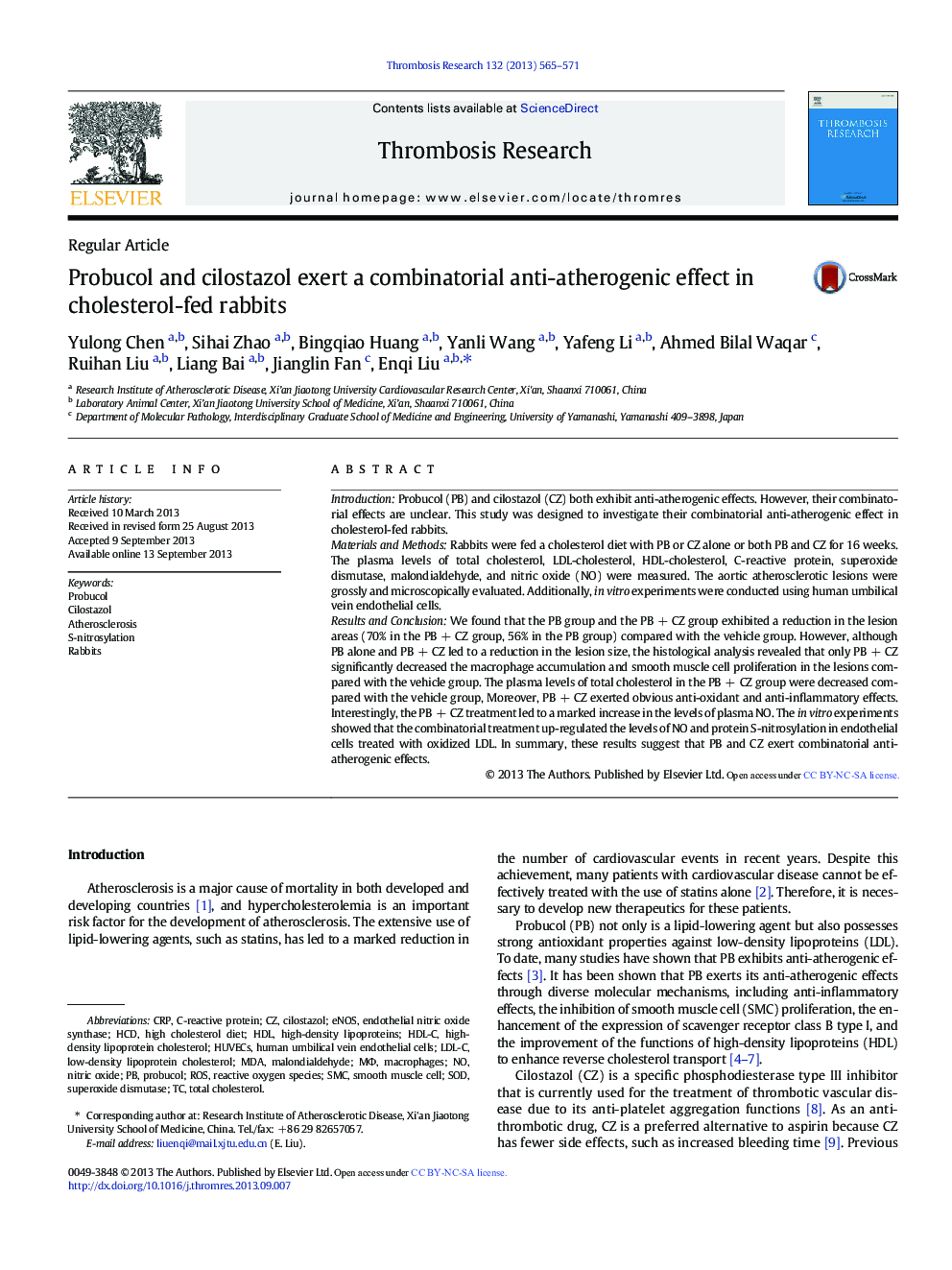| Article ID | Journal | Published Year | Pages | File Type |
|---|---|---|---|---|
| 6002736 | Thrombosis Research | 2013 | 7 Pages |
IntroductionProbucol (PB) and cilostazol (CZ) both exhibit anti-atherogenic effects. However, their combinatorial effects are unclear. This study was designed to investigate their combinatorial anti-atherogenic effect in cholesterol-fed rabbits.Materials and MethodsRabbits were fed a cholesterol diet with PB or CZ alone or both PB and CZ for 16Â weeks. The plasma levels of total cholesterol, LDL-cholesterol, HDL-cholesterol, C-reactive protein, superoxide dismutase, malondialdehyde, and nitric oxide (NO) were measured. The aortic atherosclerotic lesions were grossly and microscopically evaluated. Additionally, in vitro experiments were conducted using human umbilical vein endothelial cells.Results and ConclusionWe found that the PB group and the PBÂ +Â CZ group exhibited a reduction in the lesion areas (70% in the PBÂ +Â CZ group, 56% in the PB group) compared with the vehicle group. However, although PB alone and PBÂ +Â CZ led to a reduction in the lesion size, the histological analysis revealed that only PBÂ +Â CZ significantly decreased the macrophage accumulation and smooth muscle cell proliferation in the lesions compared with the vehicle group. The plasma levels of total cholesterol in the PBÂ +Â CZ group were decreased compared with the vehicle group, Moreover, PBÂ +Â CZ exerted obvious anti-oxidant and anti-inflammatory effects. Interestingly, the PBÂ +Â CZ treatment led to a marked increase in the levels of plasma NO. The in vitro experiments showed that the combinatorial treatment up-regulated the levels of NO and protein S-nitrosylation in endothelial cells treated with oxidized LDL. In summary, these results suggest that PB and CZ exert combinatorial anti-atherogenic effects.
